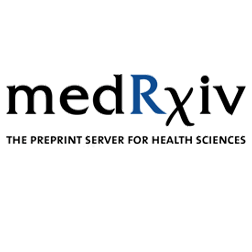4
Persistence, prevalence, and polymorphism of sequelae after COVID-19 in young adults
www.medrxiv.orgBackground COVID-19 sequelae are poorly defined with an ambiguous pathophysiology. Persistent sequelae could have global, public health and societal ramifications. We aimed to describe sequelae presenting more than six months after COVID-19 in non-hospitalized young adults.
Methods A prospective, longitudinal cohort study followed-up on young Swiss Armed Forces (SAF) personnel. The comprehensive test battery was administered during a single full day of testing at the University of Zürich. It quantified the impact of SARS-CoV-2 infection on cardiovascular, pulmonary, neurological, renal, ophthalmological, male reproductive, psychological, and general health in addition to laboratory parameters.
Results We included 501 participants (5.6% females) with a median age of 21 years (range 19-29). Cases of previous COVID -19 (>6 months (mean 10 months) since diagnosis, n=177) were compared with never infected controls (n=248). We also included more recent COVID-19 cases (≤6 months, n=19) and asymptomatically infected individuals (n=49). We found a significant trend towards metabolic disorders, higher Body Mass Index (BMI) (p=0.03), lower aerobic threshold (p=0.007), higher blood cholesterol (p<0.001) and low-density lipoprotein LDL levels (p<0.001) in participants> 6 months post Covid-19 when compared to controls. There were no significant differences in psychosocial questionnaire scores, ophthalmological outcomes, sperm quality or motility between controls and those infected more than 6 months previously with SARS-CoV-2.
Conclusions Young, previously healthy, individuals largely recover from mild infection and the multi-system impact of the infection is less that seen in older or hospitalized patients. These results may be extrapolated to health-care workers and other young workforce adults. However, the constellation of higher body mass index, dyslipidemia and lower physical endurance 6 months post COVID-19 is suggestive of a higher risk of developing metabolic disorders and possible cardiovascular complications. These findings will guide investigation and follow-up management.
### Competing Interest Statement
The authors have declared no competing interest.
### Funding Statement
This study was funded by the Swiss Armed Forces
### Author Declarations
I confirm all relevant ethical guidelines have been followed, and any necessary IRB and/or ethics committee approvals have been obtained.
Yes
The details of the IRB/oversight body that provided approval or exemption for the research described are given below:
This study was approved by the Swiss Zurich Cantonal Ethics Committee (BASEC-Nr. 2021-00256).
I confirm that all necessary patient/participant consent has been obtained and the appropriate institutional forms have been archived, and that any patient/participant/sample identifiers included were not known to anyone (e.g., hospital staff, patients or participants themselves) outside the research group so cannot be used to identify individuals.
Yes
I understand that all clinical trials and any other prospective interventional studies must be registered with an ICMJE-approved registry, such as ClinicalTrials.gov. I confirm that any such study reported in the manuscript has been registered and the trial registration ID is provided (note: if posting a prospective study registered retrospectively, please provide a statement in the trial ID field explaining why the study was not registered in advance).
Yes
I have followed all appropriate research reporting guidelines and uploaded the relevant EQUATOR Network research reporting checklist(s) and other pertinent material as supplementary files, if applicable.
Yes
The data produced in the present study may be available upon reasonable request to the authors



Well, it’s not so simple. Testosterone operates within ranges. There’s a range we consider healthy when we’re considering the typical serum testosterone level. This biomarker has a rather large range (one which I believe needs to be refined, but for the most part is adequate). This study noted that there was a decrease in the amount, but not a shift in range. Most individuals are not at the extreme edges of this range, and in fact falling in or out of the range is not a marker of reproductive function.
In this same study they looked at other fertility markers such as FSH and LH (much more important for sperm function) as well as motility - these three are much better markers of fertility than testosterone is. There was no significant change in any of these, except as noted by the authors a short term (<6mo.) decrease in motility that seemed to disappear with time.
The reason I mention all this is that I believe there is good reason for the authors to not focus on these findings. In fact, they recognize their existence and call it out in the results and discussion section. There is a reason it was excluded from the main abstract and the conclusion - these findings aren’t particularly notable if you understand how we measure fertility and sex hormone levels considered normal. On the other hand, we have ample evidence that anything increasing BMI and decreasing VO2 max are unhealthy - while both of these are often binned for simplicity purposes, we happen to know that any absolute shift affects health, whereas this is not the case with testosterone.
Thanks, that’s actually a really good analysis. Sounds like I misunderstood the significance of the particular result in the study.